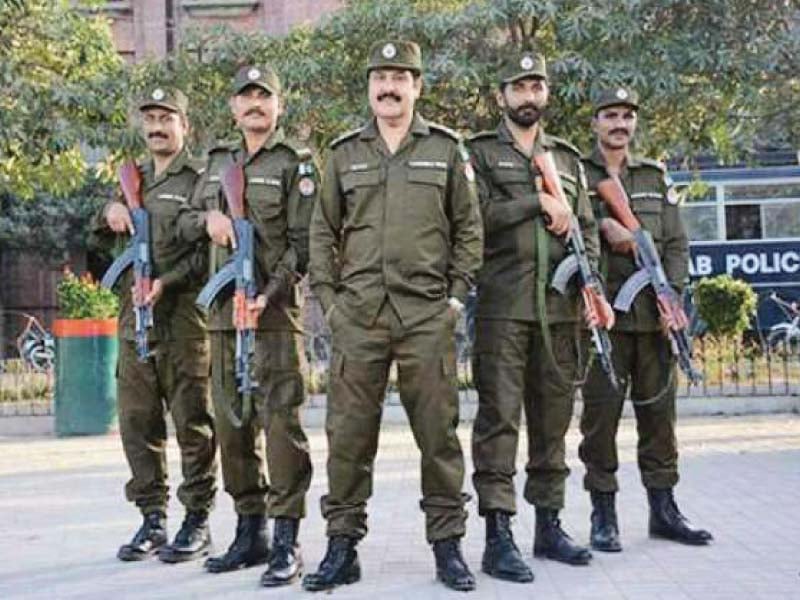The prime minister recently visited my alma mater in Islamabad, the Islamabad Model College for Boys in Sector F-8/4 and underlined his government’s commitment to improvement in education. While at the institution, he emphasised the need to “modernise” the system, announced funds for the library, the computer lab and the buses. Excellent stuff, I must say. However, the biggest announcement and perhaps a very surprising one came when he also announced the beginning of a programme to start O and A levels at federal high schools in Islamabad.
The goal, as per the prime minister, is to modernise our education system. Now, I am all for modernisation but I am not sure if moving to the O and A level system without any change in the quality of teaching staff that may have to struggle with a new system, language constraints and overloaded teaching schedules is going to lead to any desired results.
Here, it is also worthwhile to remember the history of the federal model school system in Islamabad. The model schools were first created in the 60s and 70s to make quality education available in the new city for people who were moving to Islamabad from all over the country. As the city grew, new branches were added to meet the demands of the growing city and its people who wanted to send their children to affordable and high quality institutions. During this period, the system attracted students from various sectors of the society and continued to produce high quality results. Many alums showed remarkable success in their careers both domestically and internationally. However, over the last decade or so, the quality has consistently deteriorated, largely due to the exodus of teachers to the tuition centres and other private institutions that pay better than what the model schools could offer. With a high cost of living in Islamabad, few could blame these teachers.
Now, let us come back to the prime minister’s initiative. The issues I have with this so called “modernisation” are three-fold. First of all, moving to O and A levels does not automatically mean modernisation. The reason for deterioration of these model institutions has nothing to do with the curriculum but the lack of quality teaching staff, the tremendous population pressure that has resulted in poor student-teacher ratio and the sharp increase in the tuition center culture. O and A levels introduction side steps these fundamental issues completely. Secondly, it is also important to note that the introduction of this new system, with existing financial and teaching resources, that are already stretched pretty thin is going to set the system for failure from the start. Issues around class-system (due to huge difference in the proposed tuition costs) are also noteworthy and cannot be simply brushed under the carpet.
Perhaps, the biggest issue I have with this ill-thought out policy is a philosophical one. What are we trying to achieve with this policy? We should think about the entire pipeline of our education system that not only includes secondary and post-secondary education but also connects to higher education in the country. With the bulk of our students who enter professional colleges in the country coming through the national system of HSSC, it remains unclear what will be the future of the product of these O and A level students. It is also noteworthy that with the exception of a few private higher education institutions, coming from A levels provides no particular advantage in the public professional schools. According to many experts and students, it may actually be advantageous to come from the HSSC system. It is also important to note that the model schools, historically, have never attracted the most affluent class of Islamabad and draw largely from the middle and lower middle sectors of the economic ladder. Most of these students and their families are unlikely to have the means to afford quality education outside Pakistan.
It is, therefore, unclear to me why the prime minister decided to unveil a new programme in secondary education and what is the goal of such a poorly envisioned initiative. In my opinion, our efforts should be focused towards strengthening the system from within, rather than replacing it and setting it up for failure from the start. If the prime minister really believes in modernisation of our system, then he should focus his government’s efforts in training, hiring and retaining quality teachers in our federal schools, ask experts to review and update our curriculum and create mechanisms for continual improvement of the system.
Published in The Express Tribune, December 27th, 2012.
COMMENTS (7)
Comments are moderated and generally will be posted if they are on-topic and not abusive.
For more information, please see our Comments FAQ













































The beauty of A-levels is that we have to concentrate on only 3 subjects, of our choice. Nothing is compulsory. We have enough time to develop our understanding of these 3. We don't rely on 'Ratta' in order to get good grades.
I hate to be the bearer of bad news, but I have to say who cares about higher education or education when the country is about to take a downward turn with leaders like Tahir ul Qadri and Bilawal -- education may be important, but if we do not have a country, I doubt if such discussions will mean anything.
O-level and A-level system undoubtedly is one of the best international curriculum. The teaching and learning material to teach these curricula are wide-ranged for students and teachers to choose from and mostly excellently designed giving students a good understanding of the concepts involved. The evaluation and testing style is especially good unlike the local system where it is extremely poor.
The curricula and books domestically design in Pakistan are narrow-ranged and pathetic containing many errors and having material copied from books by foreign authors.
One thing though, if a hybrid system could be developed that combined curricula-styles of North America and Cambridge.
The good point about the Britian system is, it is extensive covering more breadth whereas the nice thing about North American system is, it progressively teaches the learning-material starting from a simple explanation of a concept (for example of maths or science) in lower classes and elaborating and expanding it as the student progresses to higher classes thus giving him/her a deeper understanding of the concept and reinforcing the learning process.
If we are to produce good engineers, scientists, scholars, and researchers with strong problem-solving abilities and not just rote-learners, we've to make a transition to a good system e.g. A-level and O-level.
I agree with the author completely. As a father of two children, one of whom did FSc and the other A-levels, I have appreciation for both systems and even if one argues that A-levels may be better, this random approach used by the Government is not a step in the right direction. I wonder who, if anyone, is advising them. The question that the author poses is the right one, that is what is the value of this exercise and how is it supposed to help our national education system?
these foreign degree are just to pocket money by UK in the name of quality education
I agree with the writer that Quality and mordern education doesn't necessarily mean shifting to O/A levels. The solution is to standardize the Pakistani education system using enhanced curriculum, inducting qualified teachers and strengthen the Educational boards.
I studied O/A level from beaconhouse islamabad before I moved to ozzie to study engineering. I had a group of about 10 friends and only 2 of them left Pakistan to pursue higher education studies whearas the rest stayed behind and were a bit disadvantaged when trying to get into Pakistan Universities due to some FSc, A-level policies the government had at the time.
Their is no doubt the O/A level system is one of the best in the world and it would be a great idea to introduce it to local schools for everyone. Teacher quality is an issue in every country (even in Australia) but it dosen't mean a quality education system cannot be implemented. The goverment should help teachers upgrade their skills and in the mean time increase their pay to encourage them to stay. If we can help this 50-60% students in the country get a quality education then your knowledge economy is on the cards;)